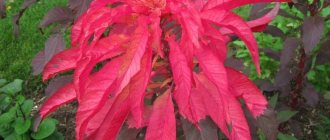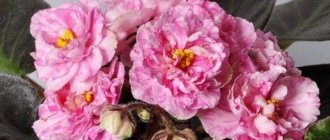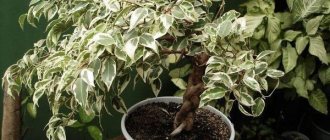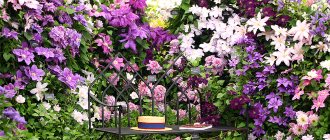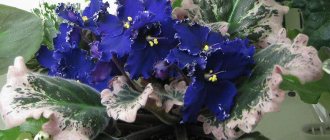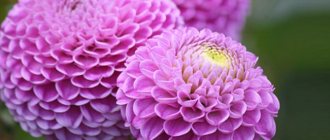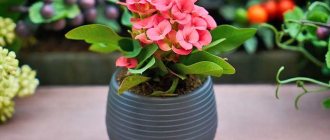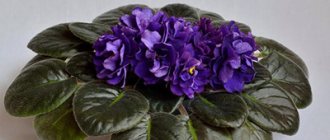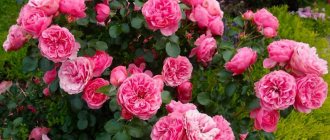Symbolic meaning of the flower
Flowers are a great way to say “thank you” or say you’re sorry, so choosing the right color is important because that’s the meaning of the gift. Since burgundy roses come in different shades, each of them has its own symbolic meaning:
- A burgundy rose, like a red one, is a true symbol of passion, warm feelings of the giver, an ideal gift for a friend or wife;
- A rose of deep burgundy color is a sign of respect, admiration for endless beauty, it is suitable for older women;
- The light color of flowers expresses charm and admiration for a person; such compositions are suitable for celebrating an anniversary;
- A darker, almost black color symbolizes closeness, deep respect, sometimes even regret - such flowers are often given as gifts in the business world.
When choosing roses for a lady, preference should be given to unopened, compact buds, since too open buds symbolize wilting.
Form
Some girls make bouquets themselves. This is quite possible if you have impeccable taste and knowledge of certain laws for creating floral compositions.
The round shape is considered classic when creating a floral ensemble, but you need to keep in mind that it is suitable only for fragile girls of short stature.
The cascade form is very original. The flowers are arranged in several tiers, which seem to float on top of each other. Lots of hanging elements create the illusion of a waterfall. This is an excellent option for slender and tall brides, but such an ensemble visually reduces height, so short girls are better off choosing a different option.
Important! A free-form bouquet in which flowers are collected in creative disorder is universal; it is also called a disheveled bouquet. It is suitable for all brides, including pregnant women.
The best varieties of burgundy roses with photos
Among the huge assortment of burgundy roses, we would like to highlight the following especially beautiful and unique varieties.
Astrid Grafin von Hardenberg
At the top of the list is Astrid Grafin, a magnificent garden rose of German selection. It has won awards at international exhibitions for its delicious scent. Its bushes are lush and spreading, reaching a height of 1.5 m. Flowers are formed in inflorescences, under the weight of which the stems bend. The buds are large, densely double, purple-burgundy in color, dense in the center. Resistant to drought and cold.
Barkarole
A beautiful tea hybrid, bred by the German company Tantau in 1988. It is grown as a cut plant in many nurseries, but also appears in private rose gardens. The shrub has a fairly compact habit, grows to a height of 70 cm and blooms throughout the season. The buds are delicate, cup-shaped, with beautifully curved petals along the edges. The color is close to red, but in the evening or on a cloudy day the petals take on a velvety black hue.
Black Baccara
This French hybrid rose, bred by Meilland International, is very popular among designers and florists. The deep burgundy-black velvety buds make this variety great for cut flowers and flower beds. The flower itself is not large, but very dense thanks to its beautifully wavy petals with pointed tips. The shrub has a compact shape and grows up to 80 cm in height.
The best place for these roses is a shady place, as they burn in the sun. Author's advice
Black Magic
Another burgundy/black tea hybrid, developed by Tantau at the end of the last century. Originally a cut rose, it has won prizes at many exhibitions and gained worldwide fame. The buds are large (up to 14 cm), classical in shape, intensely crimson in the middle, the lower petals are darker, almost black. Black Magic has almost no aroma and can be given as a gift to someone who is allergic to floral scents.
Black Prince
A bright tea rose belonging to the group of black varieties. It was developed in England in the mid-19th century and until recently was one of the darkest colors in the rose family. The shrub is low (up to 70 cm) and compact. The inflorescence is bushy and showy, containing up to 80 petals. Initially the color is black, as it develops it becomes dark burgundy, and in the shade it turns black.
Black Prince
Black magic
Black Bekara
Forever Young
This elite tea hybrid with a name that translates as “forever young” was bred in the USA specifically for cutting. Rose looks truly gorgeous. Its flower bud is about 10 cm in diameter and consists of 25 petals, which are a bright burgundy-red color. The bush is tall (up to 1 m), but compact, does not exceed 0.6 m in width. It blooms in June and again in late summer.
Freedom
Another premium variety from German selection. The color of the buds varies from dark red to light burgundy, with the inner petals being lighter and the lower ones darker. The shape of the flower is elongated and cup-shaped. The aroma is delicate and fruity. A valuable feature of roses is the complete absence of thorns. They are also harvest-hardy and tolerate transportation well.
Grand Prix
A classic hybrid tea variety bred in the Netherlands. The buds are large (12-13 cm) and dense. Its rich cherry color, fluffy, bright and velvety petals exude a delicate aroma. Roses are often grown for cutting as their stems can reach 1.5 m in length. Roses can stay in a vase for 2 weeks without losing their elasticity or aroma.
The rose is the only flower that produces completely different scents within its species. The buds can smell like honey, vanilla, citrus, raspberries, and other flowers, as well as moss, laurel and even pepper.
Red Naomi
It is often found among flower growers, as it was bred by Dutch breeders specifically for cutting. As a greenhouse hybrid, it is disease resistant and easy to grow. The inflorescence is large (13 cm) with rich cherry-colored petals, beautifully rounded at the edges. Cut roses can be stored for up to two weeks.
Ecstasy
A domestic variety grown in nurseries in the Kaluga region. These roses are sold in markets during winter and spring holidays. After pruning, the plant lasts for about three weeks and looks great with its long (up to 80 cm), straight stems. The buds are cylindrical, bright crimson in color with a delicate aroma that can be compared to the French perfume of the same name.
Ecstasy
Red Naomi
The Grand Prix
Cordyline - indoor decorative flower with long red leaves
Cordyline fruticosa
This is an indoor flower with long red leaves up to 50 cm in length with red or red and white stripes. Cordyline australis has dense green leaves without petioles, some varieties with reddish or white stripes. In both species, the leaves gradually dry out from below - this is how trunks are formed.
Family: Agavaceae (Agave).
Homeland: India, New Zealand.
Location: This ornamental flower with red leaves likes light without direct sun, Cordyline australis prefers full sun.
Temperature: for Cordyline fruticosa - warm, Cordyline australis - cool.
Air humidity: ensure high humidity, spray more often.
Substrate: flower soil mixture; for Cordyline australis - with 1/3 sand.
Watering: Cordyline fruticosa - the soil should never dry out.
Feeding: once every 3 weeks, do not feed Cordyline australis in winter.
Transplantation: if necessary.
Reproduction: seeds, apical and stem cuttings.
Pests, diseases: red mite.
Important! Place Cordyline australis outside in partial shade in summer.
Look at this flower with red leaves in the photo, which illustrates its decorative capabilities:
Options for using burgundy roses in the landscape
Marginal rose beds have a festive and elegant look and give the entire garden a sense of completion, demonstrating good taste and status. When creating such compositions, the burgundy shade must be correctly combined with other colors, otherwise the dark rose will get lost among them and lose its exclusivity.
Delicate peach, coral, white and yellow colors go well with burgundy roses. You can also create a beautiful monocluster of several shades of burgundy, and to prevent them from merging, plant red varieties between them. In a rose garden, a burgundy bush is best placed in the center, especially if it is a beautiful tea hybrid that is the pride of the gardener.
Also note that there are many burgundy varieties of climbing roses. Such plants can be planted at the entrance to the house, decorate the central path, create beautiful arches where the plant will curl. Basically, it all depends on your imagination and desire to transform your site.
Using burgundy climbing roses in landscape design
Each flower is beautiful in its own way, but the burgundy rose is a classic of floristry and a wonderful sign of respect, reverence and admiration. The main thing is to choose the right shade that will convey the meaning of the gift and will not leave the recipient indifferent.
What to consider when choosing?
Other recommendations include the following:
- You should not order a floral arrangement that has an impressive weight. It will not be easy for a young bride to wear it throughout the holiday;
- The strong aroma of flowers can cause headaches, fatigue and irritation. Even if a girl loves flowers that have a distinct scent, it is still better not to include them in the composition;
- Not all florists are specialists in creating wedding bouquets. To avoid disappointment, in the chosen florist salon you need to carefully review the catalog of finished works. This will allow you to immediately determine whether the bride likes the compositions or whether it is better to find something else;
- If there are concerns that the flowers may wither before the end of the day, then it is better to immediately order a duplicate bouquet so that the accessory can be discreetly changed at the right time.
The composition must be strong, otherwise the bouquet risks falling apart after a few hours.
The name of the indoor flower with green-red leaves is Hypestes phyllospica
Only one species is cultivated as a houseplant, Hypestes phyllospica, but there are many varieties. With age, the indoor flower with green-red leaves becomes large, but bare. Olive-colored leaves usually have pink-red or white spots. Small side shoots grow from the leaf axils. A flower with green-red leaves has one name; it has no synonyms.
Hypestes is usually cultivated as an annual.
Family: Acanthaceae (Acanthaceae).
Homeland: South Africa, Madagascar.
Location: Bright, direct sun for several hours a day.
Temperature: Room temperature, not lower than 15 °C.
Humidity: High. Do not spray.
Substrate: Flower soil mixture.
Watering: Maintain moisture in summer, but not damp; water less in winter.
Feeding: Every 2 weeks, in winter once every 6 weeks.
Transplantation: Rarely.
Reproduction: Seeds; cuttings in water.
Pests, diseases: Rare.
Important! In summer, expose the hyposthes to the air in a place protected from the sun. The roots rot if the substrate is cold, so ampelous specimens are placed in a second pot with peat or styrene chips.
Alternanthera versicolor
This annual plant with beautiful leaves that change color from copper-red to dark burgundy will decorate your garden until late autumn. In addition, it looks easy with other flowers, such as begonia.
Altentantera requires planting in a sunny, open location and well-drained soil. It does not tolerate stagnant water, but you should not overdry the soil either. With the onset of frost, the plant is transplanted into a flowerpot and brought indoors.
